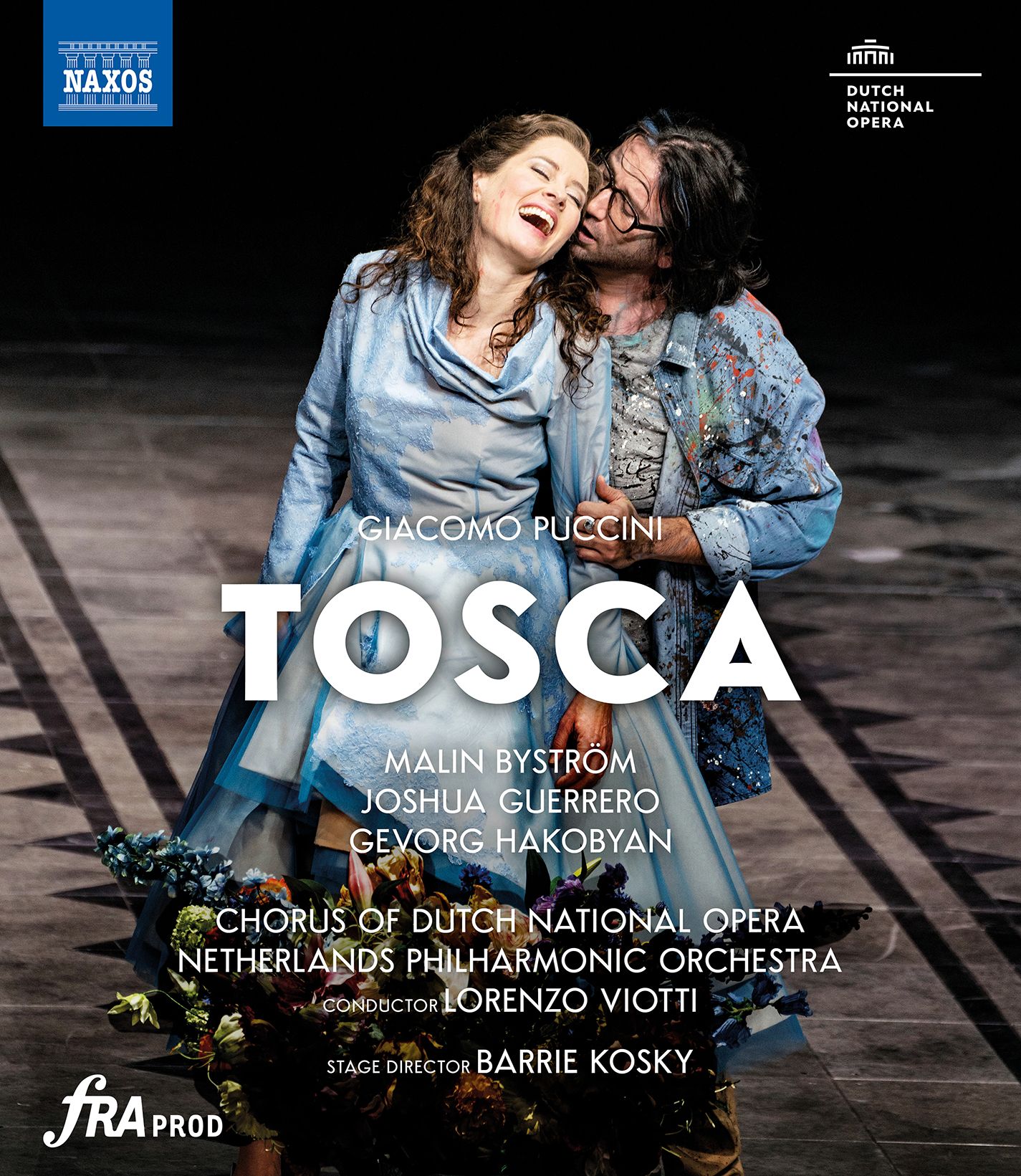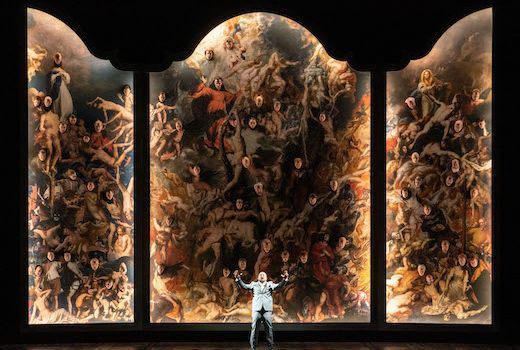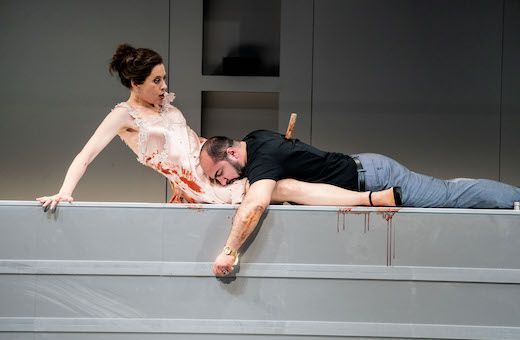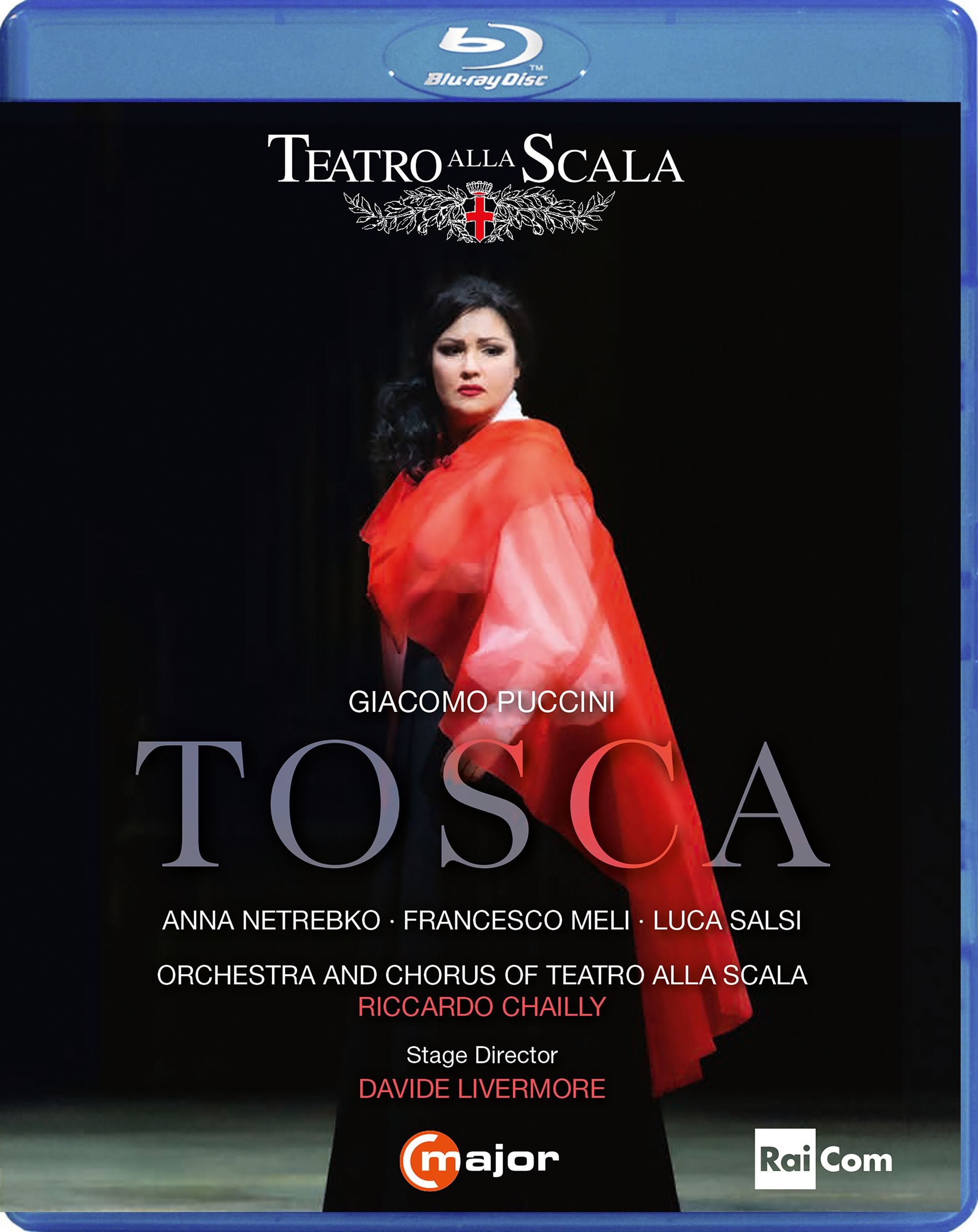A Tale of Two Toscas: Amsterdam & La Scala
The draw on paper here might be Netrebko, but it is the performance at Dutch National Opera, that is the winner

The draw on paper here might be Anna Netrebko as Tosca at Ls Scala, Milan with Riccardo Chailly at the helm, but it is the performance at Dutch National Opera, conducted by Lorenzo Viotti and directed by Barrie Kosky, that is the clear winner.
Barrie Kosky's Mafia Tosca was, ironically in the light of this post, initially conducted by Riccardo Chailly back in 1998; it is Chailly, of course, who conducts the Netrebko Tosca also considered here. I have not always warmed to Barrie Kosky as director, but in Tosca he pulls it off. Reflecting the dark plot, the staging itself concentrates on a selection of blacks and grays; it is Klaus Bruns' constumes that add somewhat painterly splashes of colour. The grays and blacks of a church vie with the ultra-modern Minimalist/brutalist kitchen of the second act. Perhaps the greatest surprise is the positively nightmarish tableau vivant at the end of the first act: a triptych in which the chorus becomes part of the art.

The second act is set in that Minimalist kitchen - the perfect place to find knives, perhaps ... here’s one:

... and there is a hatch in the floor that leads down to the basement (where Cavaradossi is being tortured).
The final act is a masterpiece of the usage of stage space: I won't spoil it, but for once the demise of Tosca is properly shoscking and effective, centering around a (revolving) brutalist, prison-like staircase.
This behind-the-scenes video gives a good idea of the production:
Musically, there is little to quibble about, and much, much to celebrate, not least Malin Byström's spectacularly acted and sung Tosca. She has a complete range of nuance, from the massively interior “Vissi d'arte” to the act 2 confrontation with - and murder of - Scarpia. Here, with Viotti taking a slower than usual tempo, this iconic aria becomes the most remarkavble meditation:
Byström is the star of the show, simply superb at every level, an entire assumption, both chilling and human, tragic and inifnitely touching. In the final act, Byström 's power is in her quietly understated ‘instructions’ to Mario (and under Viotti, the orchestral dimunuendo at this point is perfect). Byström and Viotti hold the silence perfectly before she starts speaking to Cavaradossi’s corpse; her realisation of his true state is visceral.
Viotti paints the music in the pitch black os the set itself in the final act, as we see Cavaradossi against a charcoal set, leaving a trail of blood as he leans on the corrugated wall (is that a reference also to the paint we see on him in act 1, I wonder?) .
The Scarpia is Gevorg Hakobyan (pictured earlier in this post), whose dark-shaded baritone can convey a Scarpia who is far from mono-dimensional. Casually dressed in the second act (with his cronies later in suits), his way with the dissection of his food tells us all we need to know about his character. Incidentally. a rather nice touch of the Naxos Bluray/DVD (the Bluray was used for this post) is to shunt the subtitles out of the way to the side if they threaten to interrupt sightlines. Here is the video of that act I “Te Deum” referred to earlier:
The Mario Cavaradossi is Joshua Guerrero, here on better form than in Puccini’s Madama Butterfly at Covent Garden in Septemebr last year (see my review). If his voice is not the largest, he manages plenty of characterisation. While I have heard more forceful “Vittoria”s, his “E lucevan le stelle” is remarkable, as is the staging, as one can see in this video. Also, let”s hear his “Recondita armonia”:
Each and every role is carefully cast here, with Martijn Sanders a fine Angelotti and Lucas van Lierop an equally impressive Spoletta.
The cellos of the Dutch National Oprea orchestra are fantastic in their perilous passage (that's gone a cropper on many occasion live).
As a point of interest, Malin Bystrom has sung Tosca at Covent Garden (late 2022) against Gwyn Hughes Jones' Cavaradossi and conducted by Daniel Oren) - that run used Jonathan Kent’s well-seasoned and effective production.

… and so off to Milan, for Riccardo Chailly, Anna Netrebko and Francesco Meli. Here’s the trailer:
The real strength of this Scala performance is the conductor, Rioccardo Chailly. His way with the very opening is noteworthy: heavy on the opening chords, then suddenly lighter. He finds such detail in the score - and what detail there is here throughout the opera.
Some (myself included) might find some of the weirder camera decisions of this video discombobulating: sudden camera angles from above, and rotating, to boot. You have been warned.
This was La Scala's season opener in 2019. There is no doubt that Anna Netrebko sounds fantastic, but she is a failed actress, specialising in studied gestures and poses. On a purely sound level, though, we can revel in her “Vissi d’arte”:
Her Mario (Francesco Meli) is well chosen, not a huge voice but one that is young and ardent and clearly in love with this great opera singer (for the avoidance of doubt, Floria Tosca). There is a strange vocal scoop up to the crusial repetitions of “Vittoria!” though .... Also, the Scarpia (Luca Salsi) isn't always in tune, and could have both more vocal and dramatic presence; he also has something of a Sprechgesang approach to the part.
Director Davide Livermore offers a much more traditional ending to Act I than his counterpart over in Holland, but elsewhere there are oddities, not least an ascending (literally in the air), trasncendent Tosca at the close. You can, actually, watch the entire opera - albeit with Hungarian subtitles - here:
A pity in act II we cannot, on the video, see the full panoply of reproduced art that would have been visible in the theatre. But the production is not as gripping, nor as thought-provoking, as Kosky's anyway. The scenery of act IIi is made to look like a falcon's wing, which does have relevance at least (the falcon is a crucial image in Tosca).
The true hero here is Riccardo Chailly. At one point he takes Puccini's music and makes it sound like a post-Baroque dance, which is a fascinating twist; he understands the warp and weft of Puccini's score perfectly. Few performances include such accurate horn playing at the outset of the final act. The final march to the scaffold, as it were, is perfectly paced; here, for once, the cameras get it right, with Netrebko to the right of the screen, enabling us to experience her sense of triumph before it all goes wrong ....
Chailly presents the Critical Edition of the score, which means the inclusion of a few passages one might not be familiar with, including at the very conclusion and just after “Vissi d’ arte”. Not enough to turn this around, though: go with the Dutch National Opera performance!
Amazon offers the DVD and Bluray of the Dutch performance at the same price (there is a £5 difference for the Scala performance).
